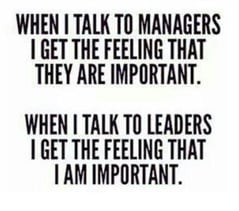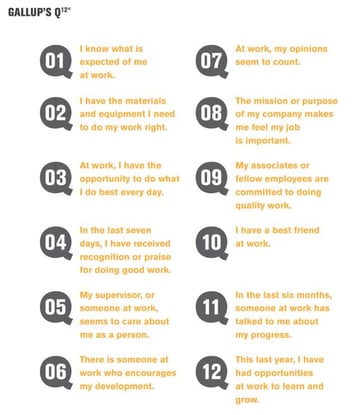Change is Good!
When your company has had a history of continuous growth, with no downturns and layoffs, how do you decide to change and separate from some of your employees despite your excellent track record, and no great upheaval in your business or the economy?
Fleck Sales is going through some painful, yet required changes to keep up with and remain competitive in an economy and world in a continuous state of VUCA, Volatile, Uncertain, Complex and Ambiguous.
Fleck Sales recently hired an industry expert, Verno Consulting, to help them examine their business practices in the wholesale business.
For several years they’ve been investing more than the industry average in sales and marketing. While the company has produced an excellent ROI, their Strategy Statement and aspirations for growth, signal a necessity to improve their bottom line efficiency to attain their growth, particularly their desire to acquire.
The Beer industry growth has been about as flat as a model on the Parisian catwalk.
Recent growth in the beer industry has been largely through merger and acquisition. That trend is expected to continue.
LEADERSHIP
 “A leader is a dealer in hope.” —Napoleon Bonaparte
“A leader is a dealer in hope.” —Napoleon Bonaparte
True leadership emerges in adversity. Nothing is more difficult than making the hard decisions on people, in order to steer the business toward its goals and objectives.
Here are three elements Fleck Sales and your company should keep in mind when you’re asking your people to change and adapt to new circumstances:
- Vision: Keep your team advised on the reasons for your changes and the decisions leading up to and to follow. Change makes people nervous. It may be no matter how clear you are about the changes and why they are occurring some people will decide to leave as a result. You can’t prevent some changes from triggering more. Some people refuse or cannot adapt. Providing the reasons will help those who are staying and growing with the business to get on board, and be even more engaged in the change.
- Openness & Transparency: This element naturally flows from the first in unveiling your vision. However this element is more focused on how to handle, the questions, uncertainty, confusion and disgruntled opinions and comments from your people. Accept and understand their view. Change is hard, especially for your longer tenured employees. Some people just want their voice to be heard. Often, simply voicing their concerns or gripes will make they feel they’ve been listened to. If they’re open to it, ask for their commitment after you’ve heard them out. Frequently, after they’ve voiced their worry, they’ll be more willing to commit.
- Strengthen Relationships: More than ever, if you’re already doing one on one meetings with your people, make sure you continue and broach the issue of the changes, in advance if possible. People like to feel they are in on things. Including them up front will give them more security about the changes, and allow them more time to adapt and engage. The strongest people in your business should always be included. They possess leadership, and will be look to for their confidence in how they feel about the changes. If you get enough people on board, with you, supporting the change before you even announce it publicly, you’ll be surprised at how much easier it will be to succeed.
Employee Engagement
One of the recommended tools we suggest company’s use for measuring employee engagement is Gallup’s Q12, which hatched from First Break All the Rules. The 12 questions they discovered defined how engaged employees are in the workforce. One of the questions on the survey is: Do you have a best friend at work?
 When change causes someone to leave your organization, this question becomes more relevant. Imagine you work with your best friend, and suddenly he or she decides to leave for another position, or more dramatic, they are asked to leave.
When change causes someone to leave your organization, this question becomes more relevant. Imagine you work with your best friend, and suddenly he or she decides to leave for another position, or more dramatic, they are asked to leave.
Armed with this information about who are best friends at work, you can be appraised of consequences from your decisions.
If you don’t want their colleague to leave as well, it might be a good time to strengthen your relationship. Several steps should include making sure the person you are courting to stay is accepted, been given approval, appreciation, and attention. These behaviors are outlined in several of our blogs:
- Positive Reinforcement: 4 Steps to “Make Others Feel Important” (1&2)
- Steps 3 & 4: Positive Reinforcement: “Make Others Feel Important"
- Positive Reinforcement - Attention
Decision Making
 Any time changes are made, questions are asked, and often after the fact, people will offer how brilliant of idiotic a decision someone made is or isn’t. At several points in my life I’ve had difficult decisions to make. As a coach and a father, I’ve had numerous occasions to be asked advice or input on decision-making. There’s one key I found above all others that helps the most.
Any time changes are made, questions are asked, and often after the fact, people will offer how brilliant of idiotic a decision someone made is or isn’t. At several points in my life I’ve had difficult decisions to make. As a coach and a father, I’ve had numerous occasions to be asked advice or input on decision-making. There’s one key I found above all others that helps the most.
Especially when a decision is hard, or the weight on either course is challenging to discern, it’s best to remember: Most decisions don’t have an absolute right or wrong. In many cases either decision can result in positive outcomes. The most important thing to remember, is: it’s what you do after the decision makes it right or wrong.
The Law of Building a Cathedral – Next Blog
Napoleon Bonaparte is not the only leader who believes great leaders must create meaning. Former CPO of Pepsi calls this the law of building a cathedral. This blog shares how critical your vision. Being good, is one of the five narratives(strategies) OUTTHINK Your Competition found the winners tended to repeat. We’ll share these five strategies, and specifically what being good is, next blog.






.jpeg?width=150&height=135&name=Hand%20with%20marker%20writing%20the%20question%20Whats%20Next_%20(1).jpeg)

